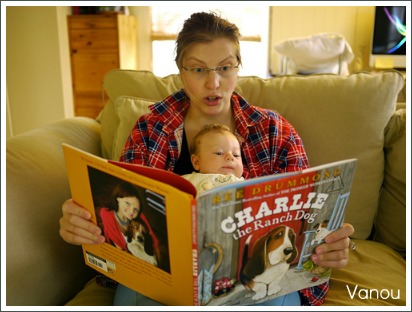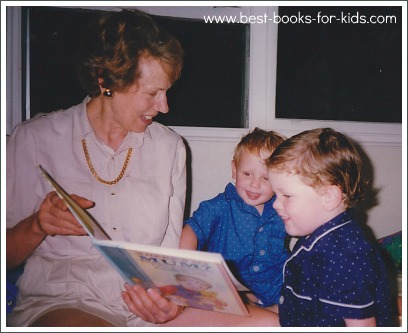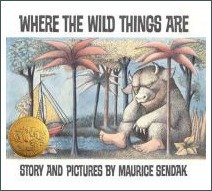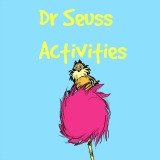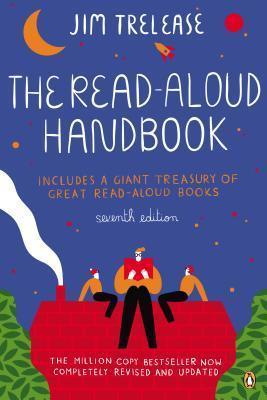You are here: home / reading to children / how to read aloud
How To Read Aloud
Some people seem to know instinctively how to read aloud.
If you were read to as a child, you may find that the memories come flooding back the first time you sit down to read to your baby and that reading aloud seems to come naturally.
If, on the other hand, you were not read to much when you were young, you may feel that you really have no idea of how to read aloud and find the whole idea stressful and even embarrassing. If this is the case, please don't worry. Reading aloud can definitely be learned and it's not at all difficult to master. It's easy once you know how and it really is great fun!
Learning how to read aloud is like many things in life: you learn how to do it by doing it!
Learning How To Read Aloud
The key to learning how to read aloud is to start when your baby is very young.
First up, forget any feelings of embarrassment you may have.
You and your baby are the only ones who’ll hear you and your baby certainly isn’t going to judge your reading skills and tell you you’re hopeless!
The first time I read to my baby sons, I did feel a bit silly. After all, they were only a few months old and they couldn’t take part in the conversation so why was I pointing out the animals in the book and reading to them as if they understood? OK, so they obviously didn’t understand the story but they certainly watched me closely and seemed to enjoy the whole experience. And I stopped feeling silly almost immediately and started to really get into reading aloud.
So my best tip if you’re just starting to read aloud is to just do it and to learn as you go.
Having said that, there are some things you can do to become really good at reading aloud.
The best read-aloud tips I’ve ever read were written by Mem Fox, the queen of reading aloud. Mem breaks down the whole process in her wonderful book, Reading Magic, a book that's really well worth getting hold of, if you can (try the Book Depository).
In the meantime, this page details a few of the things to remember when you first begin to read aloud to your child.
How To Read Aloud
1. Get comfortable
Snuggle up on a squishy sofa or bed with your little one on your lap or cuddled up beside you. Lying on a blanket in the garden is great too and there are probably a hundred other places you could find to read aloud. Just make sure everyone is comfortable and not too hot or cold and that you have good lighting.
2. Read with expression
There are a few parts to this. Reading expressively involves your voice, your eyes and your facial expression and sometimes your whole body too. It’s about the way you pronounce the words but it’s also about the pauses, the rhythm of your voice as you read and the way you emphasize certain words and phrases:
- widen and narrow your eyes to show fear, shock or amazement. Smile, frown, show that you’re thinking, tilt your head to show that you’re listening ... you get the picture, I’m sure;
- take care not to read in a falsely over-expressive way. We want to sound interesting but not patronising;
- read the book beforehand if you can so that you’ll know how to read it. In most cases, the author will tell you how to read parts of the story. For example, as Mem Fox says, you wouldn’t read a line like “voices whispered in the bushes” in a loud voice. You’d whisper it slowly;
3. Don’t read too quickly
This is a mistake many of us make when they’re learning how to read aloud. Some parts of a story do need to be read quickly – if a character is rushing or panicked, for example – but in general, read more slowly than you think you should. This is because children’s brains need time to process the words and to ask questions to clarify anything they don’t understand. When you're reading to older children, reading slowly allows them time to build mental pictures of the story.
4. Encourage your children to participate
How this works depends on the age of your audience. When my sons were three and four and we were reading Where the Wild Things Are, they used to love to roar and gnash their teeth at the part in the story when the wild things “roared their terrible roar” and “gnashed their terrible teeth”.
But even one-year-olds will love making the animal noises and they very soon start to remember the word to favourite stories. When this happens you can encourage your child to “read” the next part of the story himself. Also encourage your child to ask questions about the story and wonder together what might happen next.
With a new story, it’s also good to look at the cover together before you start reading. Point out the title and the author’s name (and the illustrator’s, if there is one) and ask questions about what the story might be about.
5. Read the story the same way every time
Children love it this. It helps them to remember and to predict the story and they get really excited about it! This in turn encourages them to try to “read” the story themselves. Young children love this and it’s also really important for the development of their pre-reading skills.
I hope these tips are helpful but the very best way to learn how to read aloud is to do it!
